When you purchase through links on our site, we may earn an affiliate commission. Here’s how it works.
What is Smart Lighting? – Overview
Smart lighting comprises several technologies so that indoor or outdoor bulbs can function automatically under specific conditions. Various smart lighting systems do multiple things; however, some of the most popular ones comprise smart bulbs that can turn on as soon as someone enters a room or change color when something happens.
Depending on the bulbs you get, you can adjust the color to over 16 million different hues. This will allow you to set the perfect ambiance; for instance, you can pick a shade such as warm white, which is similar to sunset allowing you to create a cozy ambiance in your space.
Some smart lights can be grouped together where all the bulbs being set up are in one room or all the bulbs are on the same floor. This will allow you to control them simultaneously, whether it’s just turning them on and off or configuring them such that each bulb has a specific color without needing to adjust each one of them manually.
Most smart bulbs, such as those from LIFX are designed to replace your current lighting setup entirely. Other such as those from Philips, the Hue lineup offers side bulbs and pendant lights that replace your current home fittings. You can also find smart lights that you can attach to your walls, such as the Nano leaf, creating illuminated art-like shapes.
Smart lights are also compatible with virtual assistants such as Apple HomeKit, Alexa, and Google Assistant. So you can configure them to be controlled using other smart home appliances such as the Amazon Echo Show. Some of the smart lights out there don’t work with all voice assistants, so ensure you check the spec sheet before making any commitments.
Types of Smart Lighting Systems
What Is Smart Lighting? – Types of Smart Lighting Systems
Smart lighting systems are grouped according to their applications and how they are controlled. These groups include:
Wi-Fi Smart Lights
This type of smart light system is controlled using Wi-Fi. Lights in this class can be connected to regular bulb holders. Afterward, you need to connect your bulbs to your Wi-Fi network and control them remotely. You can connect a multitude of bulbs using this setup.
Smart Lights That Use a Hub
You can also expand the functionality of your smart home by using smart lights that use the same communication technology, otherwise known as a hub. The downside of lights in this class is that you cannot use them without a hub.
Motion Sensing Lights
Motion sensing lighting systems use PIR (passive infrared) sensors to detect motion, after which they will turn on or off. These lights come in handy in a sitting room so that when you enter the house, the lights turn on. Also, you can use them outside for security such that when someone approaches your home during the night, the lights automatically turn on.
Which Communication Technologies Are Found On Smart Lighting Systems?
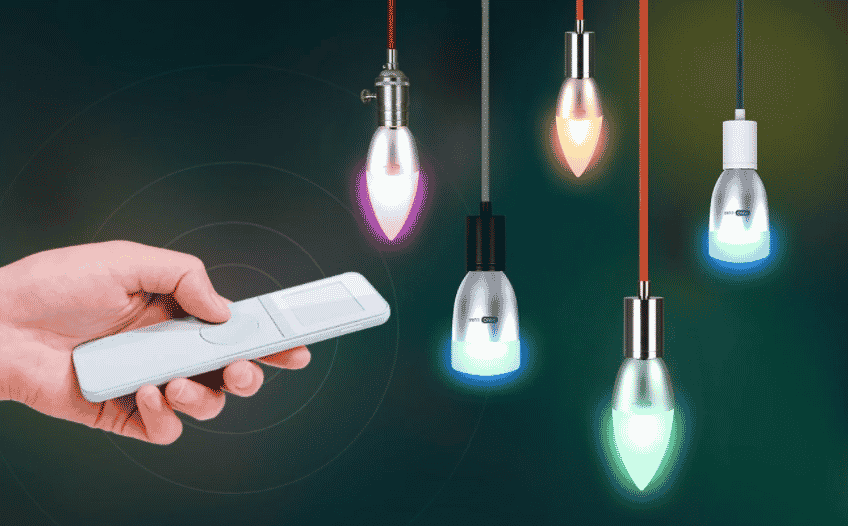
Which Communication Technologies Are Found On Smart Lighting Systems?
Wi-Fi
Wi-Fi-ready smart lighting systems need to be connected to the internet via an access point (router) to be controlled remotely. If the network is inactive, the lights won’t function.
Bluetooth
Bluetooth-ready smart lighting systems can form a mesh network and be controlled using a smartphone. Most Bluetooth-ready smart lighting systems work with apps developed by the manufacturer. So, you need to install the app on your smartphone to control the lights.
ZigBee & Z-Wave
Just like Bluetooth-ready smart lighting systems, ZigBee and Z-Wave-ready smart lighting systems can also form a mesh network. However, you need a hub to control these lights meaning that if you don’t have a ZigBee-ready or Z-Wave-ready hub, the lights won’t work.
The main benefit of ZigBee smart lighting over Wi-Fi smart lighting is that Wi-Fi smart lights can only communicate with the router. ZigBee intelligent lights, on the other hand, can communicate with each other by relaying signals from the hub.
How Do You Install Smart Lights?
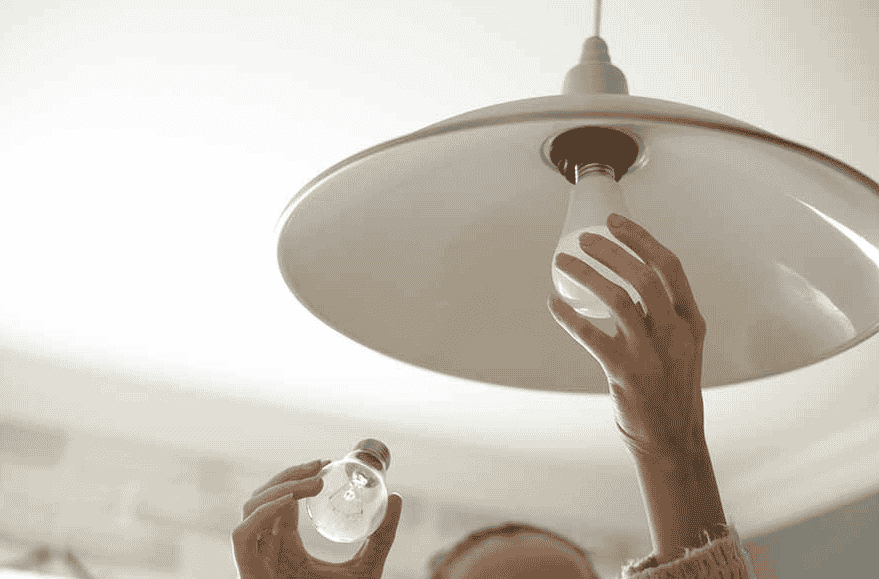
How Do You Install Smart Lights?
Connecting smart lighting in your house can be as simple as unboxing the bulb and screwing it into a socket. Most smart bulbs are compatible with any current light equipment and switches in your home, making installation relatively easy.
To get the extra level of control you crave, you might need to install the bulb’s dedicated smartphone app. Most smart bulb manufacturers will give you in-depth instructions on where to download their dedicated smartphone apps and how to configure them.
If you’d like to install smart lighting in the entire house or use a smart hub to control the lights, it can become a bit tricky. You’ll need to ensure that you buy intelligent lights that are compatible with your hub. If your hub has the IFTTT (If This, Then That) protocol, you can experiment with various bespoke styles for your smart lighting equipment.
How Can You Control Your Smart Lights?
Once you install an intelligent lighting system, you can control it using the following:
IFTTT (If This, Then That) Protocol
When you have a smart hub with IFTTT protocol, you can transform your intelligent lighting system into a notification system for internet alerts such as incoming mail, Facebook, and Twitter. Therefore, you can configure the lights to flicker when there is a notification from your smartphone or any of your social media accounts.
Mobile Apps
Most intelligent lighting manufacturers provide you with their own apps that allow you to group the lights together and schedule turn-on and off periods. However, if you’d like more control and features, buy intelligent lights that work with voice assistants.
Voice Assistant
Connecting smart lights to a voice assistant is perhaps the most popular way to control them. You have several options with regard to voice assistants, including Apple’s Siri, Amazon Alexa, and Google Assistant. All these voice assistants are very capable control points, especially if you have a compatible smart display or speaker in your home, such as Echo Show or Echo Dot.
Why Do You Need Smart Lights in Your Home?
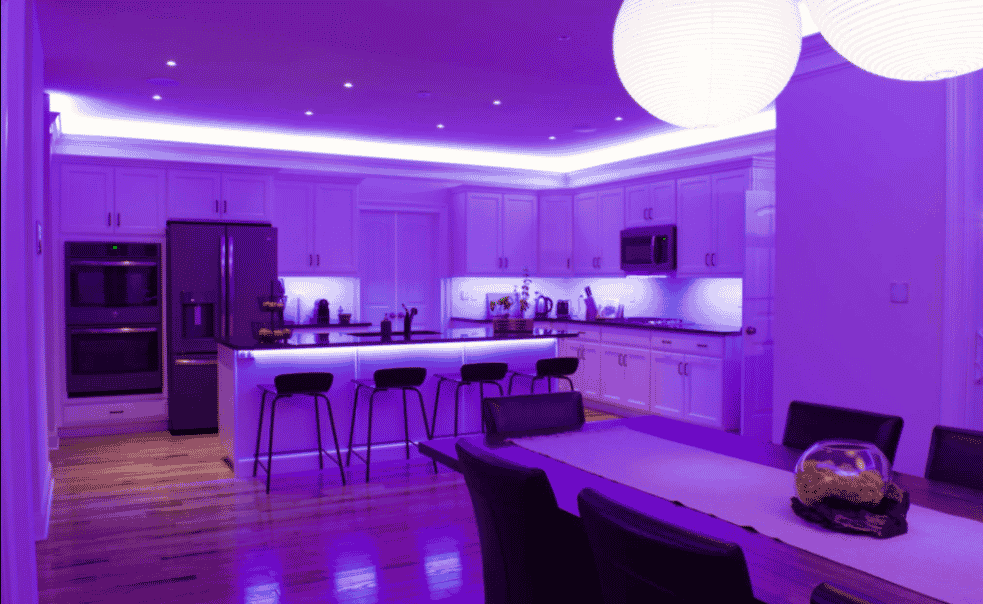
Why Do You Need Smart Lights in Your Home?
To Adjust the Brightness in Your Home
One of the best features of smart lights is that you can adjust the light they produce. Unlike regular bulbs, which require a dimmer switch to adjust the brightness, if you have smart lighting, all you need to do is use your smartphone or give a voice command.
To Save Both Money and Energy
Some intelligent lights are equipped with motion sensors. As a result, these lights only turn on when they sense human motion in close proximity. When you compare this to the regular bulb offerings, you save both money and energy.
To Illuminate Your Home with Various Colors
Some smart light offerings support up to 16 million color options. You can play around with various color shades and set all kinds of moods in your home. With the OEM app or a voice assistant, you can change the color to a hue you like, and they will illuminate accordingly.
To Control All Your Lighting Using Your Voice
If you’ve swapped all regular lighting fixtures in your home with smart lights, you can control all of them using a voice assistant. For instance, if you’re in the downstairs living room, you can switch off lights on the second floor using a voice command.
To Secure Your Home
Since smart lights can connect to other smart home appliances, you can integrate them with security doorbells, cameras, and alarms. This can deter robbers and other malicious people from accessing your home even when you’re not around.
To Play Music
Some smart lights come with in-built speakers so you can connect your smartphone and play music from them. How cool is that? Some smart lights can even move to the beat of the songs you’re playing, whereby they will glow or dim depending on the beat.
To Schedule Your Desired Sleep and Wake Up Times
Smart lights can also help you to sleep well at night. For instance, you can configure your bedroom lights to dim at a certain time to help you sleep better. You can also configure them to turn on in the morning and help you to wake up
Can Smart Lighting Improve Your Overall Well-Being?
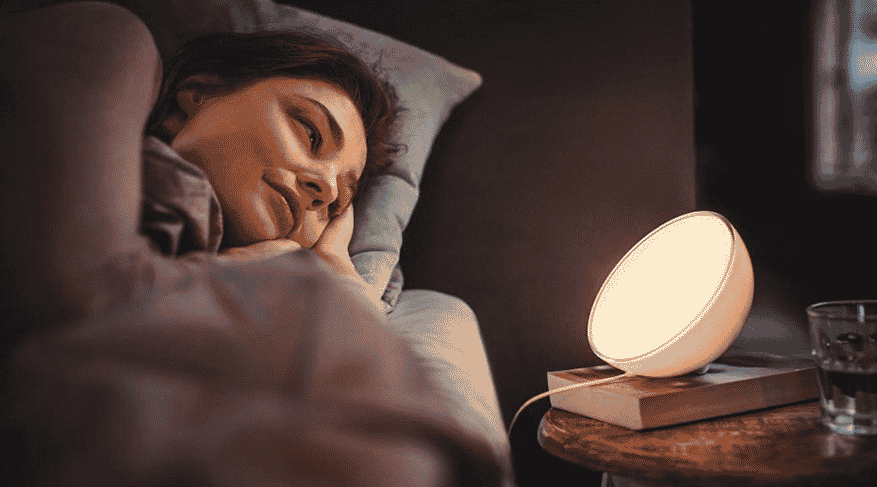
Can Smart Lighting Improve Your Overall Wellbeing?
Some intelligent lighting systems do more than just illuminate your home and cut down your monthly energy bill. They can also improve your overall well-being.
A lot of research is being done to figure out how blue light negatively impacts sleep patterns and melatonin levels. Pure white light, on the other hand, has been deemed to disrupt circadian rhythms. Over time this can lead to health issues linked to lack of enough sleep.
Due to this research, smart light manufacturers are starting to produce smart lighting systems that can change color at night to help you sleep better. Dedicated night modes on smart lights provide a warm and cozy ambiance in your home. They deploy warm color tones that don’t disrupt circadian rhythms allowing you to get a deep night of sleep.
What’s The Relationship Between Smart Lights and LED Technology?
It wasn’t that long ago that people were paying 30 to 50 dollars just to get regular LED bulbs connected to their homes. The math made sense. The average LED bulb adds about one dollar to your energy bill each year compared to seven dollars per year for incandescent bulbs.
This means that one LED bulb will save you about six dollars per year over incandescent bulbs and since LED bulbs have a life span of between 15,000 to 25,000 hours, paying such an excessive amount for them back then seemed like a sensible long-term investment.
In 2014 the LED market was shaken by government subsidies and rising efficiency standards; this led to lots of new bulbs being introduced. The competition between companies helped bring the prices of LED bulbs down while the demand from consumers grew by up to tenfold. This meant that LED manufacturers had to keep on innovating.
The result is what we have today; LED bulbs keep on getting cheaper and better. Today it’s the smart lighting industry that’s leading the charge of moving us to the new LED age, and there is no indication that this move is about to slow down anytime soon.
Do Smart Lights Work Well with Dimmer Switches?
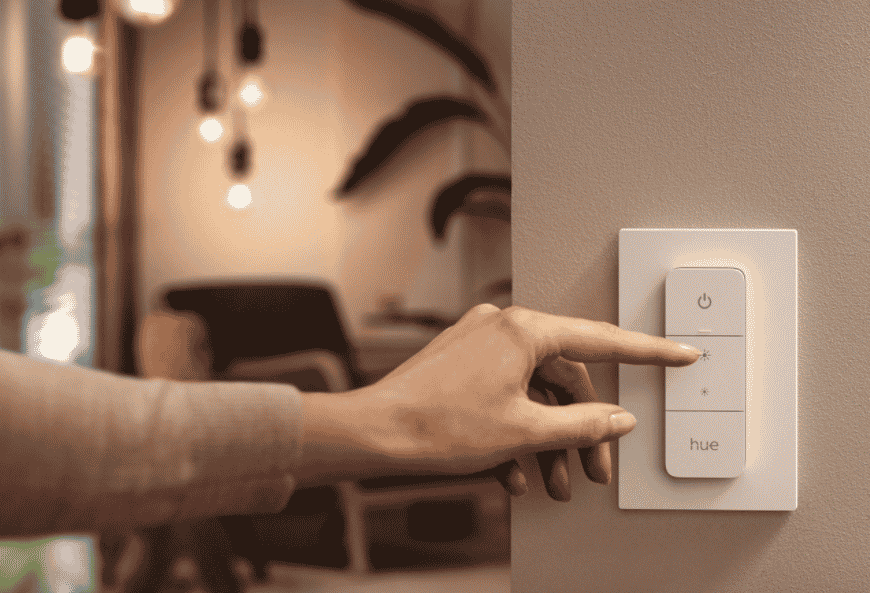
Do Smart Lights Work Well with Dimmer Switches?
Smart lights work well with smart dimmer switches, but they will struggle when it comes to old-fashioned dimmer switches. You don’t really need to have a dimming switch because most smart lights have their own in-built dimming mechanisms.
Therefore, if you use a dimming switch, the two dimming mechanisms can clash, causing the light to strobe suddenly as you dim it up and down. The good news is that the built-in dimming mechanisms in most intelligent lights are superb with seamless, exact brightness controls that won’t flicker compared to what you see with most old-fashioned dimmer switches.
Now we are seeing manufacturers build smart dimmer switches that are designed to pair nicely with intelligent lights. Smart dimmer switches also comprise the old-fashioned, physical dimming controls which you need to install on a wall at a point that’s reachable. It’s an additional investment, but you can be sure that it will come in handy now or in the future.
What’s The Life Span of a Smart Lighting Bulb?
All smart lights are built using LED technology; it’s the sole reason they can emit such as a high amount of lumens. So just like LED bulbs, smart lights have a very long life span.
However, smart lights can last longer than regular LED lights because they are more efficient and can be turned off remotely, meaning they don’t have to be on all day.
Note: When you install smart lighting in your home you can integrate them with other smart devices such as alarms, motion sensors, video doorbells etc. Some of the things your smart lights can do include turning on when the motion sensor detects motion, entryway lights turn on when you open the front door among other things.
Final Thought
To sum it all up, smart lighting enables you to improve your home in more ways than one, as illustrated above. As you can see, smart lighting also helps improve your overall wellbeing. When you’re ready to buy an intelligent lighting system, you have several options to choose from depending on the other smart appliances you have in your home.